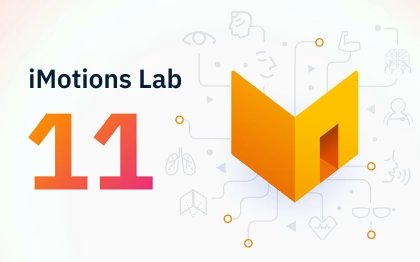Table of Contents
There was once a British game show called “Golden Balls,” where contestants faced a dramatic decision involving deception and trust. In this show, two finalists must choose to either split or steal a jackpot. If both choose to split, they share the money equally. If one chooses to steal while the other splits, the stealer takes all. If both choose to steal, neither wins anything.
In one memorable episode, a contestant, Nick, announced his intention to steal the money but assured his partner that he would share it afterward. The crowd laughed at him and it was evident that the other player thought he must be mad. But what they didn’t know, was that this strategy, was intended to coerce his partner into choosing to split. It was a risky bluff. In the end, Nick chose to split, revealing his true intention was to force a cooperative outcome all along. This episode, which has been featured in a Radiolab podcast episode and can be seen here, perfectly encapsulates the psychological and strategic complexities of the Ultimatum Game.
What is the Ultimatum Game?
The Ultimatum Game is a fundamental experiment in economic and psychological research, illustrating how people make decisions about fairness and cooperation. In this game, one player (the proposer) is given a sum of money and must offer a portion of it to another player (the responder). The responder can either accept or reject the offer. If the responder accepts, the money is split accordingly. If the responder rejects, both players receive nothing.
Historical Background and Origins
The Ultimatum Game was first introduced by economists Werner Güth, Rolf Schmittberger, and Bernd Schwarze in 1982. It was designed to study negotiation and decision-making processes, revealing that people often reject unfair offers even at a cost to themselves, challenging the traditional economic assumption of rational self-interest.
The simplicity of the game belies its profound implications for understanding human behavior, highlighting the interplay between fairness, emotion, and strategic thinking. By analyzing how individuals respond to offers, researchers gain insights into the principles guiding social interactions and the inherent value placed on fairness and reciprocity.
In the context of the Ultimatum Game, the “Golden Balls” scenario exemplifies the strategic depth and psychological tactics players might employ, offering a real-world parallel to this classic experiment.
Theoretical Foundations
The Ultimatum Game is rooted in economic and psychological theories that explore human decision-making, fairness, and cooperation. Its theoretical foundations challenge classical economic assumptions and offer insights into social preferences and behaviors.
Rational Choice Theory
Rational Choice Theory posits that individuals make decisions by maximizing their utility, focusing solely on personal gain. In the Ultimatum Game, this theory predicts that the proposer should offer the smallest possible amount, and the responder should accept any non-zero offer since it increases their utility. However, empirical evidence consistently contradicts this prediction, suggesting that other factors, such as fairness and reciprocity, play crucial roles in decision-making [1].
Predictions from Game Theory
Game Theory provides a framework for understanding strategic interactions in the Ultimatum Game. According to the Nash Equilibrium concept, rational players should converge on a strategy where the proposer offers the smallest amount and the responder accepts it. However, this outcome is rarely observed. Instead, proposers typically offer 30-50% of the total amount, and responders often reject offers below 20%, indicating that fairness considerations heavily influence behavior [2].
Social Preferences
Research in behavioral economics introduces the concept of social preferences, which encompass fairness, altruism, and reciprocity. These preferences suggest that individuals derive utility not only from their own payoffs but also from the payoffs of others and the perceived fairness of outcomes. In the Ultimatum Game, this explains why responders reject low offers: they are willing to incur a cost to punish perceived unfairness [3].
Experimental Evidence
Experiments reveal that human behavior in the Ultimatum Game deviates from pure self-interest. For instance, Güth, Schmittberger, and Schwarze’s initial study found that proposers frequently offered around 40-50% of the total amount, and low offers were often rejected by responders, contradicting the rational self-interest model [4].
Cultural Influences
Cultural factors also play a significant role in the Ultimatum Game. Cross-cultural studies demonstrate varying norms of fairness and reciprocity, with some cultures showing higher acceptance rates of unequal offers than others. This variation underscores the importance of social and cultural context in shaping economic behavior [5].
The theoretical foundations of the Ultimatum Game highlight the complexity of human decision-making, challenging the assumptions of rational choice theory and emphasizing the importance of fairness, social preferences, and cultural influences. By examining these factors, the Ultimatum Game provides a richer understanding of the interplay between individual and social motives in economic interactions.
Experimental Findings
The Ultimatum Game has been the subject of extensive experimental research, revealing intriguing patterns in human behavior that often deviate from theoretical predictions based on pure self-interest.
Common Behavioral Patterns
Generosity of Proposers:
- Proposers frequently offer between 30-50% of the total amount to the responder. This finding is consistent across numerous studies and cultures, suggesting a strong inherent preference for fairness [6].
Rejection of Low Offers:
- Responders commonly reject offers below 20% of the total amount, even though rejecting any positive amount means receiving nothing. This behavior highlights the importance of perceived fairness and the willingness to punish perceived inequity [7].
Cultural Variations in Responses
Cross-cultural studies have shown that norms of fairness and rejection thresholds vary significantly across different societies:
Western Societies:
- In Western cultures, such as the United States and Western Europe, proposers tend to offer around 40-50%, and low offers are often rejected [8].
Small-Scale Societies:
- In smaller, non-Western societies, the offers and acceptance rates can differ markedly. For example, in some hunter-gatherer communities, proposers might offer much less, and responders might accept lower offers more frequently, reflecting different social norms and economic structures [9].
Psychological and Emotional Influences
The Ultimatum Game has also shed light on the psychological and emotional factors influencing decision-making:
Emotional Reactions:
- Responders often experience strong negative emotions, such as anger or resentment, when receiving low offers, which drives them to reject these offers despite the cost to themselves [10].
Fairness and Reciprocity:
- The game illustrates that fairness and reciprocity are deeply ingrained in human behavior. People are not purely self-interested; they value equitable outcomes and are willing to sacrifice personal gain to achieve or enforce fairness [11].
Influence of Communication and Reputation
Studies have explored how communication and reputation affect decisions in the Ultimatum Game:
Pre-Game Communication:
- Allowing proposers and responders to communicate before making decisions can lead to higher offers and higher acceptance rates, as communication fosters trust and understanding [12].
Reputation Effects:
- When players know they will interact multiple times, they tend to make fairer offers and reject unfair ones less frequently, indicating that reputation and future consequences influence behavior [13].
Experimental findings from the Ultimatum Game challenge the notion of purely rational self-interest by highlighting the importance of fairness, emotional responses, and social norms in human decision-making. These insights have profound implications for understanding economic behavior, negotiations, and social interactions.
Neuroscientific Perspectives
The Ultimatum Game offers a valuable framework for exploring the neural underpinnings of decision-making, fairness, and social interactions. Neuroscientific research using techniques like functional magnetic resonance imaging (fMRI) and electroencephalography (EEG) has shed light on the brain regions and processes involved in these complex behaviors.
Brain Regions Involved
Prefrontal Cortex:
- The prefrontal cortex, particularly the dorsolateral prefrontal cortex (DLPFC), is crucial for executive functions, such as decision-making and self-control. During the Ultimatum Game, the DLPFC is activated when individuals evaluate offers and decide whether to accept or reject them, reflecting its role in processing fairness and regulating emotional responses [14].
Anterior Insula:
- The anterior insula is associated with emotional processing and the perception of unfairness. High activity in the anterior insula is observed when responders face unfair offers, correlating with feelings of anger and disgust that often lead to rejection of these offers [15].
Ventromedial Prefrontal Cortex (vmPFC):
- The vmPFC is involved in evaluating the value of different outcomes and integrating emotional and cognitive information. Its activity reflects the integration of social preferences and personal gain when making decisions in the Ultimatum Game [16].
Striatum:
- The striatum, part of the brain’s reward system, is activated by fair offers and successful cooperative interactions. This region’s response indicates that fair treatment and cooperation are inherently rewarding [17].
Neuroimaging Studies and Findings
Fairness and Emotion:
- Neuroimaging studies have shown that the brain’s response to fairness is not just cognitive but deeply emotional. The anterior insula’s activation in response to unfair offers underscores the emotional component of decision-making in the Ultimatum Game [18].
Mentalizing and Social Cognition:
- The medial prefrontal cortex (mPFC) is involved in mentalizing, or understanding the intentions and beliefs of others. During the Ultimatum Game, the mPFC helps players anticipate the reactions of their counterparts, facilitating more strategic and socially aware decisions [19].
Conflict and Control:
- The anterior cingulate cortex (ACC) is implicated in conflict monitoring and cognitive control. Its activation during the Ultimatum Game reflects the internal conflict between accepting an unfair offer for monetary gain and rejecting it to uphold fairness norms [20].
Conclusion
Neuroscientific research on the Ultimatum Game reveals the intricate interplay between cognitive processes and emotional responses in decision-making. By identifying the specific brain regions involved, these studies enhance our understanding of how humans navigate fairness and cooperation in social interactions. The findings underscore the complexity of human behavior, driven by both rational calculations and emotional impulses.
Critiques and Limitations
While the Ultimatum Game provides valuable insights into human behavior and decision-making, it is not without its criticisms and limitations.
Experimental Validity
Artificial Setting:
- Critics argue that the controlled, artificial setting of the Ultimatum Game may not accurately reflect real-world decision-making processes. In real-life negotiations, individuals often have more information about each other and interact in more complex social environments [21].
One-Shot Nature:
- Many studies use a one-shot version of the game, where players only make a single decision. This setup may not capture the dynamics of repeated interactions, where strategies and behaviors evolve over time [22].
Cultural and Social Factors
Cultural Bias:
- Most Ultimatum Game studies have been conducted in Western, educated, industrialized, rich, and democratic (WEIRD) societies. These populations may not represent global human behavior, leading to potential biases in generalizing findings [23].
Social Context:
- The social context in which the game is played can significantly influence outcomes. For instance, players’ decisions might be different if they are aware of being observed or if their reputation is at stake [24].
Psychological Complexity
Simplistic Assumptions:
- The game assumes simplistic binary choices (accept or reject), which might not fully capture the psychological complexity of fairness and cooperation. Real-world negotiations often involve more nuanced strategies and options [25].
Emotional and Cognitive Overlap:
- Distinguishing between emotional and cognitive motivations in decision-making can be challenging. The interplay between these factors is complex, and the Ultimatum Game may oversimplify this relationship [26].
Methodological Issues
Sample Size and Diversity:
- Some studies may suffer from small sample sizes or lack of diversity, which can limit the robustness and generalizability of the findings [27].
Replicability:
- As with many psychological experiments, replicability can be an issue. Variations in experimental setup, participant characteristics, and contextual factors can lead to inconsistent results [28].
Conclusion
Despite its valuable contributions to understanding human behavior, the Ultimatum Game has several limitations that must be considered. Addressing these critiques through more diverse, realistic, and methodologically robust studies can help refine our understanding of fairness, cooperation, and decision-making.
Recent Developments and Future Research
The Ultimatum Game continues to be a fertile ground for research, with recent developments focusing on enhancing the experimental designs and incorporating new technologies to deepen our understanding of human behavior.
Multimodal Research Approaches
Integration of iMotions Lab:
- iMotions Lab offers a multimodal approach to studying the Ultimatum Game, combining EEG with other physiological measurements such as heart rate and skin conductance. This integration allows researchers to capture a comprehensive view of the cognitive and emotional processes involved in decision-making.
Dynamic Interactions:
- Recent studies have begun to explore more dynamic and realistic interaction scenarios, moving beyond the static, one-shot nature of traditional Ultimatum Game setups. This includes repeated interactions, real-time negotiations, and varying the stakes to better mimic real-world conditions [29].
Cross-Disciplinary Collaborations
Neuroscience and Psychology:
- Collaborations between neuroscientists and psychologists have led to a better understanding of the neural and psychological underpinnings of fairness and cooperation. These studies leverage advanced neuroimaging techniques to map brain activity patterns associated with different decision-making strategies [30].
Cultural Studies:
- Cross-cultural research continues to expand, examining how cultural norms and values influence behavior in the Ultimatum Game. This helps to identify universal principles of fairness and cooperation, as well as cultural variations [31].
Future Directions
Enhanced Realism in Experimental Design:
Future research aims to create more ecologically valid experiments that closely resemble real-life social and economic interactions. This includes incorporating elements such as reputation, communication, and longer-term relationships [32].
Technological Innovations:
Advancements in wearable technology and mobile platforms could enable researchers to conduct Ultimatum Game experiments in more naturalistic settings, collecting data in real-time and across diverse populations [33].
Comprehensive Data Analysis:
The use of big data analytics and machine learning algorithms can help uncover patterns and insights from large datasets, enhancing our understanding of the factors that drive decision-making in the Ultimatum Game [34].
Conclusion
The Ultimatum Game remains a powerful tool for exploring the complexities of human decision-making, fairness, and cooperation. Recent advancements in experimental design and technological integration, particularly through platforms like iMotions Lab, offer exciting opportunities for future research. By embracing a multimodal approach and fostering cross-disciplinary collaborations, researchers can continue to uncover the nuanced dynamics of social interactions, providing valuable insights into human behavior.
References
- Samuelson, P. A. (1938). A note on the pure theory of consumer’s behaviour. Economica, 5(17), 61-71. ↩
- Nash, J. (1950). Equilibrium points in n-person games. Proceedings of the National Academy of Sciences, 36(1), 48-49. ↩
- Fehr, E., & Schmidt, K. M. (1999). A theory of fairness, competition, and cooperation. Quarterly Journal of Economics, 114(3), 817-868. ↩
- Güth, W., Schmittberger, R., & Schwarze, B. (1982). An experimental analysis of ultimatum bargaining. Journal of Economic Behavior & Organization, 3(4), 367-388. ↩
- Henrich, J., Boyd, R., Bowles, S., Camerer, C., Fehr, E., Gintis, H., & McElreath, R. (2001). In search of Homo economicus: Behavioral experiments in 15 small-scale societies. American Economic Review, 91(2), 73-78. ↩
- Güth, W., Schmittberger, R., & Schwarze, B. (1982). An experimental analysis of ultimatum bargaining. Journal of Economic Behavior & Organization, 3(4), 367-388. ↩
- Camerer, C. F. (2003). Behavioral Game Theory: Experiments in Strategic Interaction. Princeton University Press. ↩
- Henrich, J., Boyd, R., Bowles, S., Camerer, C., Fehr, E., Gintis, H., & McElreath, R. (2001). In search of Homo economicus: Behavioral experiments in 15 small-scale societies. American Economic Review, 91(2), 73-78. ↩
- Henrich, J., et al. (2005). “Economic Man” in cross-cultural perspective: Behavioral experiments in 15 small-scale societies. Behavioral and Brain Sciences, 28(6), 795-855. ↩
- Pillutla, M. M., & Murnighan, J. K. (1996). Unfairness, anger, and spite: Emotional rejections of ultimatum offers. Organizational Behavior and Human Decision Processes, 68(3), 208-224. ↩
- Fehr, E., & Fischbacher, U. (2003). The nature of human altruism. Nature, 425(6960), 785-791. ↩
- Bohnet, I., & Frey, B. S. (1999). Social distance and other-regarding behavior in dictator games: Comment. American Economic Review, 89(1), 335-339. ↩
- Andreoni, J., & Miller, J. H. (1993). Rational cooperation in the finitely repeated prisoner’s dilemma: Experimental evidence. The Economic Journal, 103(418), 570-585. ↩
- Sanfey, A. G., Rilling, J. K., Aronson, J. A., Nystrom, L. E., & Cohen, J. D. (2003). The neural basis of economic decision-making in the Ultimatum Game. Science, 300(5626), 1755-1758. ↩
- Sanfey, A. G., Rilling, J. K., Aronson, J. A., Nystrom, L. E., & Cohen, J. D. (2003). The neural basis of economic decision-making in the Ultimatum Game. Science, 300(5626), 1755-1758. ↩
- Koenigs, M., & Tranel, D. (2007). Irrational economic decision-making after ventromedial prefrontal damage: Evidence from the Ultimatum Game. Journal of Neuroscience, 27(4), 951-956. ↩
- Tabibnia, G., Satpute, A. B., & Lieberman, M. D. (2008). The sunny side of fairness: Preference for fairness activates reward circuitry (and disregarding unfairness activates self-control circuitry). Psychological Science, 19(4), 339-347. ↩
- Sanfey, A. G., Rilling, J. K., Aronson, J. A., Nystrom, L. E., & Cohen, J. D. (2003). The neural basis of economic decision-making in the Ultimatum Game. Science, 300(5626), 1755-1758. ↩
- Amodio, D. M., & Frith, C. D. (2006). Meeting of minds: The medial frontal cortex and social cognition. Nature Reviews Neuroscience, 7(4), 268-277. ↩
- Botvinick, M. M., Cohen, J. D., & Carter, C. S. (2004). Conflict monitoring and anterior cingulate cortex: An update. Trends in Cognitive Sciences, 8(12), 539-546. ↩
- Levitt, S. D., & List, J. A. (2007). What do laboratory experiments measuring social preferences reveal about the real world? Journal of Economic Perspectives, 21(2), 153-174. ↩
- Fehr, E., & Gächter, S. (2000). Fairness and retaliation: The economics of reciprocity. Journal of Economic Perspectives, 14(3), 159-181. ↩
- Henrich, J., Heine, S. J., & Norenzayan, A. (2010). The weirdest people in the world? Behavioral and Brain Sciences, 33(2-3), 61-83. ↩
- Camerer, C., & Fehr, E. (2004). Measuring social norms and preferences using experimental games: A guide for social scientists. Foundations of Human Sociality: Economic Experiments and Ethnographic Evidence from Fifteen Small-Scale Societies, 55-95. ↩
- Kagel, J. H., & Roth, A. E. (Eds.). (1995). The Handbook of Experimental Economics. Princeton University Press. ↩
- Pillutla, M. M., & Murnighan, J. K. (1996). Unfairness, anger, and spite: Emotional rejections of ultimatum offers. Organizational Behavior and Human Decision Processes, 68(3), 208-224. ↩
- Yamagishi, T., et al. (2009). The social exchange heuristic: Managing errors in social exchange. Rationality and Society, 21(1), 81-89. ↩
- Open Science Collaboration. (2015). Estimating the reproducibility of psychological science. Science, 349(6251), aac4716. ↩
- Bolton, G. E., & Zwick, R. (1995). Anonymity versus punishment in ultimatum bargaining. Games and Economic Behavior, 10(1), 95-121. ↩
- Sanfey, A. G., Rilling, J. K., Aronson, J. A., Nystrom, L. E., & Cohen, J. D. (2003). The neural basis of economic decision-making in the Ultimatum Game. Science, 300(5626), 1755-1758. ↩
- Henrich, J., Boyd, R., Bowles, S., Camerer, C., Fehr, E., Gintis, H., & McElreath, R. (2001). In search of Homo economicus: Behavioral experiments in 15 small-scale societies. American Economic Review, 91(2), 73-78. ↩
- Fehr, E., & Camerer, C. F. (2007). Social neuroeconomics: The neural circuitry of social preferences. Trends in Cognitive Sciences, 11(10), 419-427. ↩
- Moll, J., de Oliveira-Souza, R., & Eslinger, P. J. (2006). The neural correlates of moral sensitivity: A functional magnetic resonance imaging investigation of basic and moral emotions. Journal of Neuroscience, 26(38), 10367-10372. ↩
- Lopez-Perez, R. (2008). An experimental analysis of team production in high school: A classroom experiment. Journal of Economic Education, 39(3), 243-258. ↩











